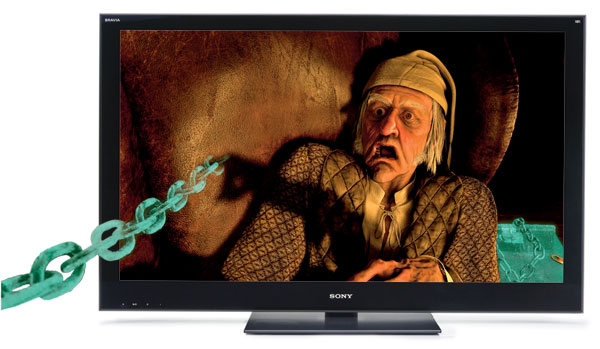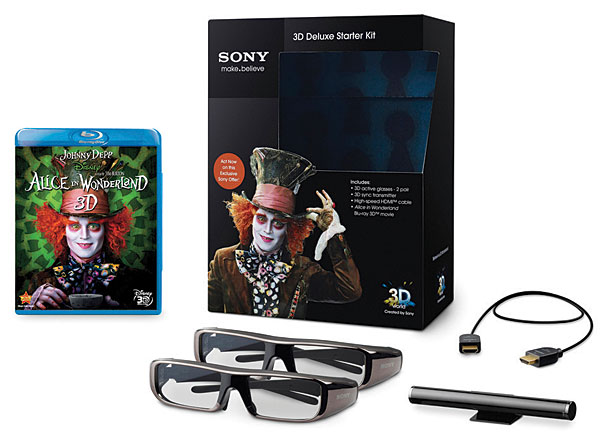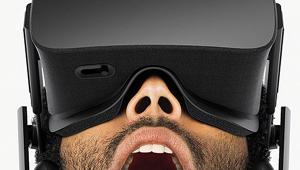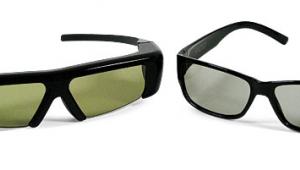3D For You And Me: Your Complete 3D Setup Guide

But that first 3D fad only lasted a couple of years, and by 1955 it was largely over —but not forgotten. 3D never completely died out. There were occasional 3D mini-resurrections over the years, but the problems with the format—the need for two projectors, twice as much expensive film, proper synchronization, and those infernal glasses—always managed to turn off both studios and audiences sooner or later.
But the cat has come back. Today we’re in the midst of a new resurgence of 3D. Audiences don’t seem to object to the continuing need for 3D glasses, or even the premium prices that 3D theatrical presentations command. Digital technologies, both on the production and display sides, have eliminated most of the old technical barriers, and thousands of theaters have been retrofitted with the digital projectors needed for modern 3D presentations.
Comin’ On Home
3D at the multiplex is fun, but for better or worse, television has become our window
on the world. And that window is about to become more transparent. As I walked around the show floor at the big Consumer Electronics Show in Las Vegas last January, I saw that 3D was everywhere. A few set makers gamely tried to sell another story, but 3D was the show-stopper.
Now, several months later, 3D sets are available from virtually every major television maker—all of them rolling the dice big time. It’s hard to tell if the holiday shopping season will see the explosion of 3DTV sales some are predicting. But from what we’ve seen so far, apart from the sheer size of a big theater screen, the 3D experience at home can be every bit as compelling as it is in the theater.
What You’ll Need: The 3D HDTV
The first thing you’ll need to bring 3D home is a 3DTV. While they’re outwardly similar to any HDTV and fully capable of 2D playback, 3DTVs can decode and display 3D from one of several standard 3D formats. In general, 3D sets also offer separate setup menus for 2D and 3D material, plus additional 3D controls that can help you get the best out of 3D sources.

Some of these sets, like LCD models from Sony, Samsung, and Toshiba, and some new Panasonic plasmas, include special processing that converts 2D sources into a semblance of 3D. Our limited experience with this feature so far suggests that it can be effective with some material, but it’s no substitute for the real thing.
The flat-panel 3D displays we’ve tested have performed as well as, and in some cases better than, roughly equivalent 2D sets. They’ve also been higher priced. But the price premiums for the 3D sets we’ve seen so far have been lower than we originally feared. And as with all new technologies, those premiums will certainly shrink over time.
Viewing 3D in both the home and the theater still requires funky 3D glasses. But don’t worry, the new 3D platforms aren’t based on the flimsy colored anaglyph glasses used for previous iterations of 3D. The type of glasses required in the home, at least in the displays we’ve seen so far, and those we anticipate, use sophisticated active shutter technology. That is, the left and right images flash on the screen sequentially at a very rapid rate. The battery-powered shutters in the glasses open and close for each eye in sync with these images to ensure that each eye sees only the images intended for it.
![]()
Some sets include one or two sets of shutter glasses and the built-in IR emitter needed to trigger them as part of the original package. But not all. For example, the emitter and 3D glasses are add-on options for some Sony 3D sets, which gives consumers the choice of 3D now or updating later. While prices will undoubtedly drop if 3D catches on in a major way, extra sets of shutter glasses are expensive for now, currently around $150 each. That’s something to keep in mind if you’re considering the purchase of a 3D set. For now, inviting your friends and neighbors over for 3D movie night is an expensive proposition.
















































